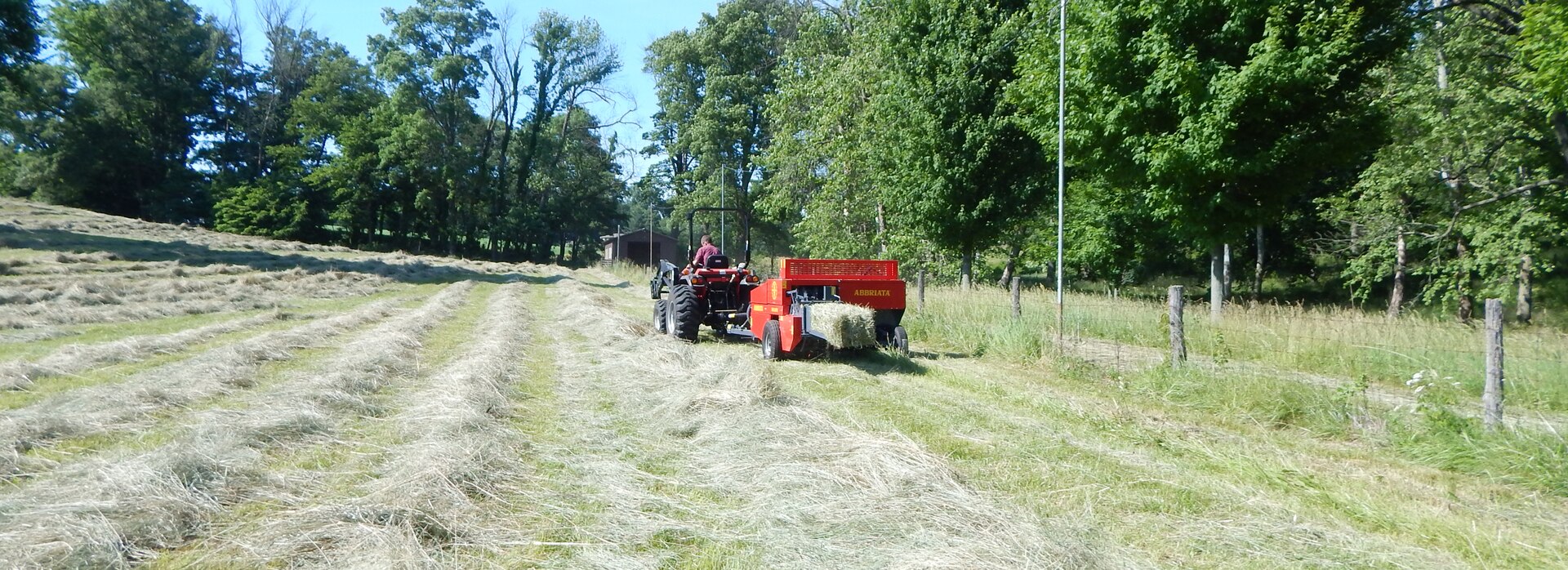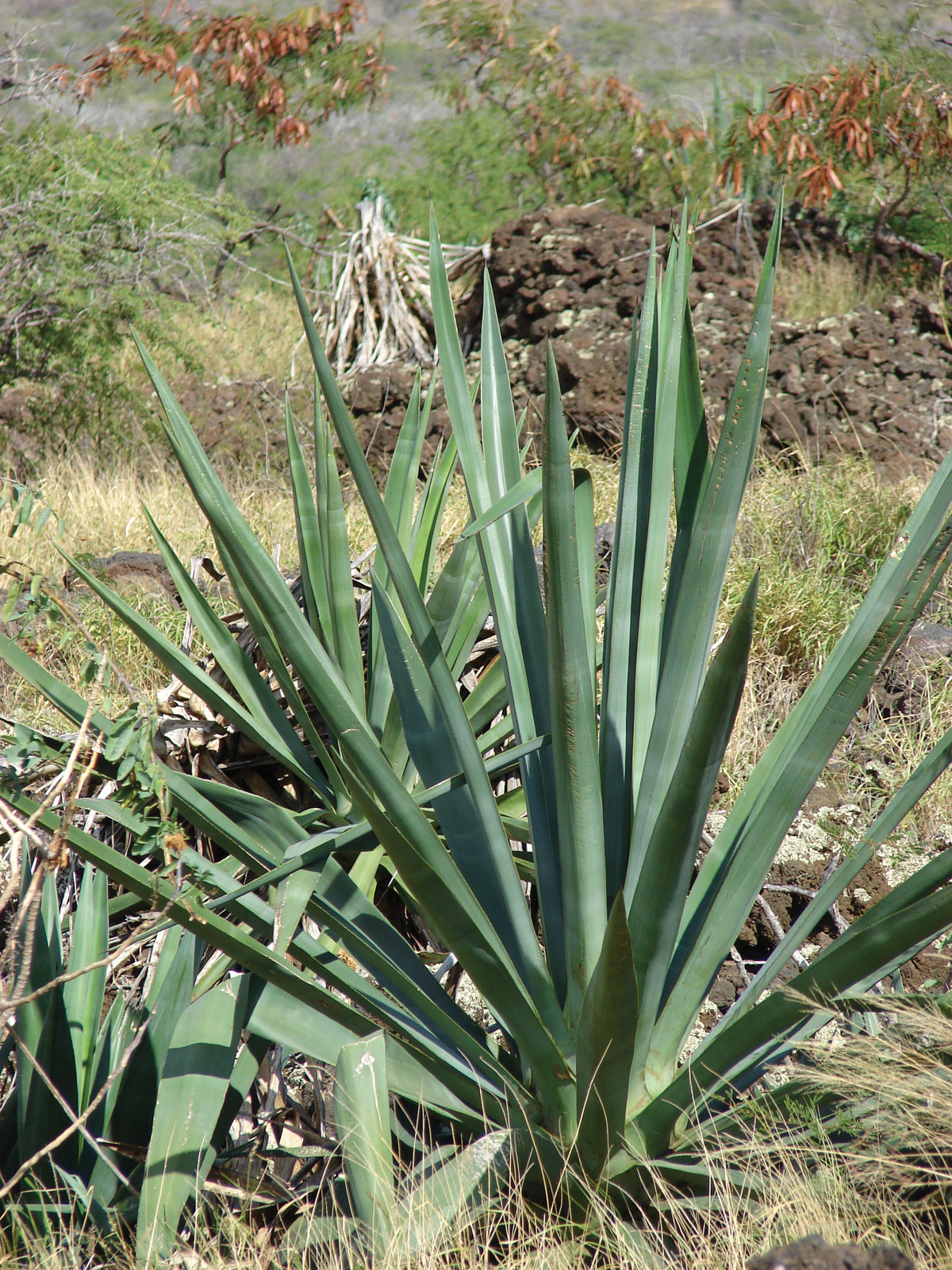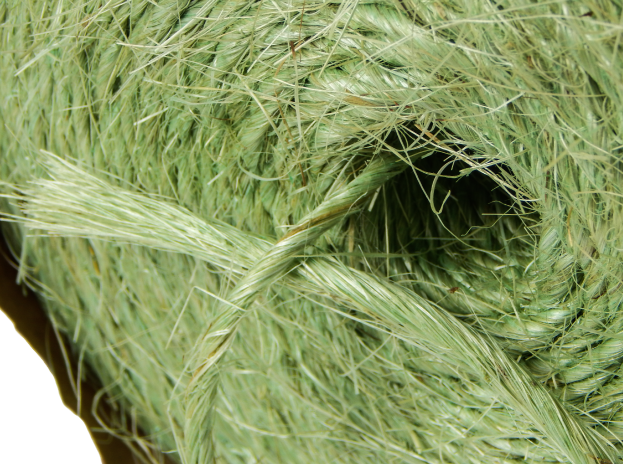Sisal Twine - A Natural Choice for Bale Binding

When baling hay, one of the decisions a producer must make is what type of bale binding to use. Hay binding materials include sisal twine, polypropylene twine, hemp twine, net wrap and others. This blog will discuss sisal twine.
What is sisal?

Sisal is a fiber found naturally in plants of the agave family. These plants grow in the arid regions of Central America, Mexico and the American Southwest. Native to South America, the fiber has been used since pre-Columbian times but became of commercial interest in the late 1800’s.
Agave sisalana, the plant from which sisal is derived, looks a lot like a yucca plant and belongs to the same subfamily. The plant grows to a height of about 3 feet with spear-shaped leaves and a central flowered stalk. It takes about 5 years to reach maturity.
The fiber is obtained from the leaves. Each plant produces roughly 300 leaves over its lifetime. The leaves are cut from the plant and crushed between the rollers of a machine. At that point, the pulp is removed and the remaining fibers are washed and dried.
Sisal fiber is touted for its strength, durability, and ability to stretch. It is used for agricultural, marine and shipping purposes and woven into matting and rugs.
What is sisal twine?
Sisal twine is a natural option for binding hay. Advantages of sisal twine are that it is digestible and biodegradable. Refuse plastic twine and net wrap can litter feedlots and barns for years since it does not degrade. Furthermore, a study conducted by North Dakota State University found that accidentally ingested net wrap and plastic twine remained in a cow’s rumen for upwards of 14 days. Sisal twine did not.

While net wrap and plastic twine can be stronger, sisal twine is durable enough for small round and square bales. For larger bales it works well too. You just have to be sure that the sisal product you are buying is of full weight and full length. A bargain price isn’t a good deal if the twine is weak. Some hay producers are concerned that sisal twine might rot too quickly. This should not be a problem for hay stored indoors or under cover. In this environment, if your sisal twine is rotting, your hay is likely past its prime anyway.
For bales left in the field as feed, biodegradability is actually a perk. You won’t be finding refuse twine wrapped around animals’ necks or your wagon’s wheels for years to come.
Some farmers use a clever feed management strategy with bales bound by natural fiber twine. For the last baling of the year, mini round bales are not collected, but instead left in the field, where livestock graze through the winter. Livestock quickly learn that as the twine rots off the bottom of the bale, the small round bales can be nudged over to expose fresh, nutritious hay. Since the bales are randomly scattered throughout the field, livestock don’t congregate in one area thus reducing wear and compaction on the field and improving spring regrowth. Farmers report that this management strategy results in better utilization of the late season hay crop versus leaving long growth through the winter.
Sources
https://hayandforage.com/article-2500-finding-the-right-binding.html
www.wildfibres.co.uk › html › sisal
https://www.agriculture.com/family/living-the-country-life/choosing-baling-twine
https://www.britannica.com/plant/sisal
https://www.sciencedirect.com/topics/engineering/sisal
Recent Posts
-
Boost Pine Straw Production Efficiency with Ibex Mini Round Balers
At Tractor Tools Direct, we're known for our high-quality hay equipment tailored for small farms …Dec 8th 2025 -
How to Winterize Your Tractor: Essential Maintenance Tips to Protect Your Investment
Farm equipment is one of the most valuable investments a farmer can make. At Tractor Tools Direc …Dec 1st 2025 -
Farm Tax ID Explained: Benefits, Eligibility, and How to Apply
As the end of the financial year approaches, it's a great time for small farmer operators to rev …Nov 12th 2025




